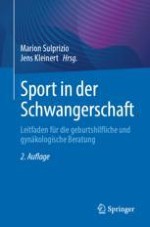2023 | OriginalPaper | Buchkapitel
9. Beckenboden
verfasst von : Birgit Schulte-Frei, Rebecca Böwe, Lars Jäger, Astrid Landmesser
Erschienen in: Sport in der Schwangerschaft
Verlag: Springer Berlin Heidelberg
2023 | OriginalPaper | Buchkapitel
verfasst von : Birgit Schulte-Frei, Rebecca Böwe, Lars Jäger, Astrid Landmesser
Erschienen in: Sport in der Schwangerschaft
Verlag: Springer Berlin Heidelberg
Print ISBN: 978-3-662-67951-7
Electronic ISBN: 978-3-662-67952-4
Copyright-Jahr: 2023
